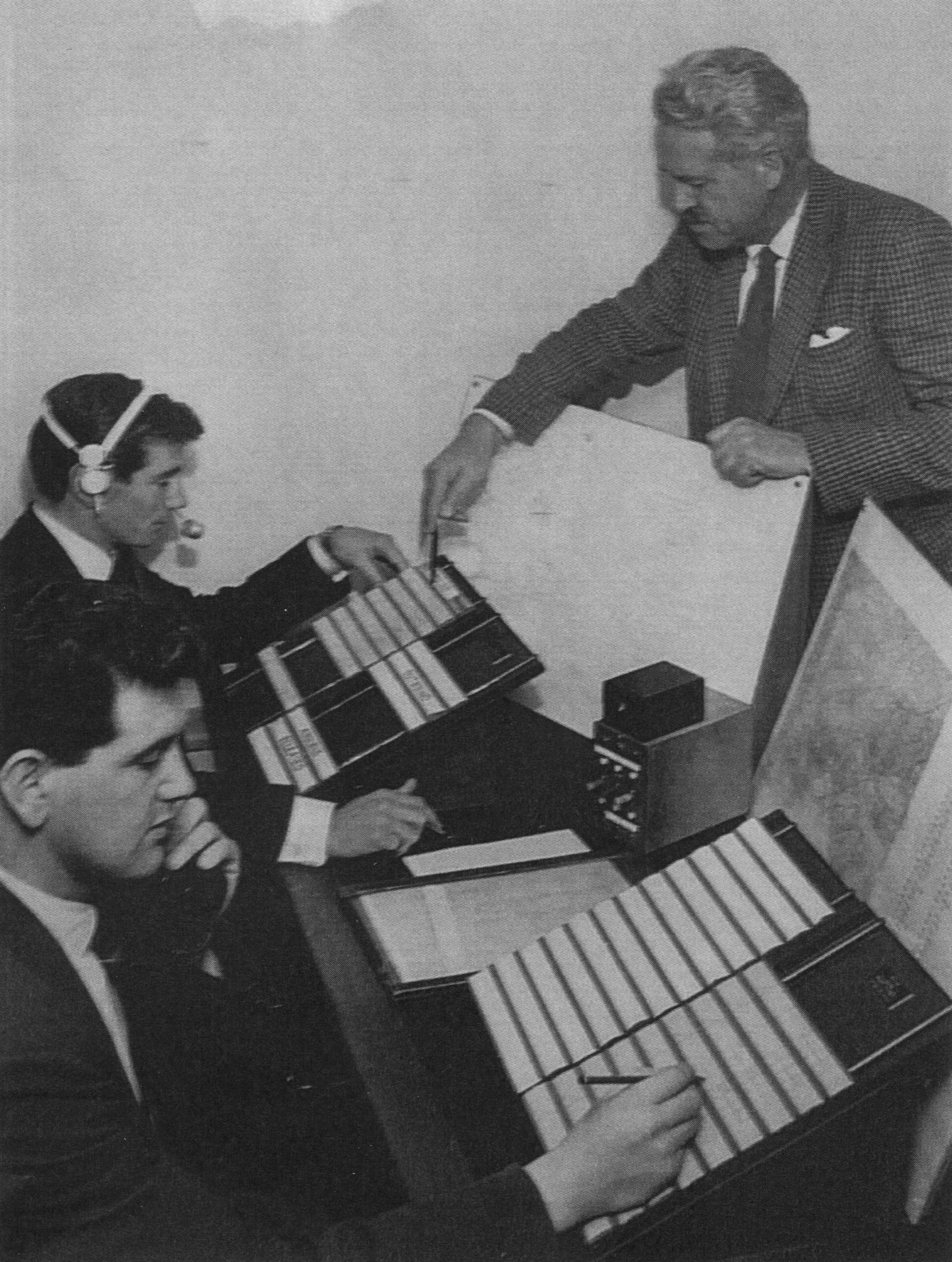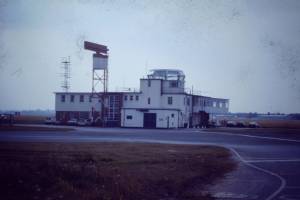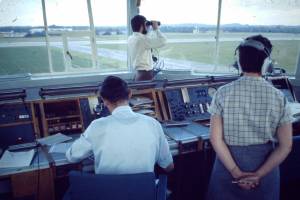photos of ATC Hurn from the late 1940s onwards

HH1 The tower in its wartime configuration. G-AGLV is a BOAC Lancastrian and was one of two that initiated the first land plane air service to Australia as WW2 ended. They were soon replaced on the passenger service but continued to fly freight.

HH1a Bristol Freighter with the Hurn GCA in the distance

HH2a

HH3a Percival Proctor G-AIEY wearing race number 71
Interior view of new VCR in late 40s, probably Aerodrome and Approach control. First radar was in a cubbyhole built off the stairs (a 424?).
again 1940s peace time view Tower and approach plus an assistant

HH5a Hurn Field Training Unit in the 1960s

HH5b the Spring of 1959. The ATCO standing on the left is Byron Jones, the other two escape me although the chap in the middle could be Bob — (I have a feeling he may have ended up at RAF Manston where civil ATCO’s with ‘A’ Ratings looked after the local cross Channel Corridor from Southend). The ATCA’s name also escapes me.
I was an ATCA at Southampton at the time when the Airport was partially closed due to water logging problems and some staff including Byron and myself were temporally seconded to Hurn. I think Don Smith was the Hurn SATCO. Ian James



![hh-acr430-danair-hs748-1980s[1]](https://atchistory.wordpress.com/wp-content/uploads/2015/07/hh-acr430-danair-hs748-1980s1.jpg) HH10 the Plessey 430 radar, Danair 748 in background, in the 1980s – John Faulkner
HH10 the Plessey 430 radar, Danair 748 in background, in the 1980s – John Faulkner HH11 Brian Hutt in Hurn Approach operating using the Plessey ACR 430 radar, again in the 1980s – John Faulkner
HH11 Brian Hutt in Hurn Approach operating using the Plessey ACR 430 radar, again in the 1980s – John Faulkner










two photos from the air show in 1984







HH5b Yes I believe it is Byron Jones. He was at Farnborough when I arrived in 1974 having been working at Southampton along with Harry Davies. I don’t know when Southampton ceased to be MTCA. Prior to Southampton, Byron had been a Mustang pilot during D Day and just after and was recalled to the RAF when the Korean war started and after some refresher flying, he was given a Vamplre; there were no 2 seaters so it was just a matter of a briefing then he was told to go (from Little Rissington I think) to the Isle or Wight and back!
LikeLike
In HH7, the ATCO closest to camera is (IIRC) Graham Sweet
LikeLike
Didnt the nav eject from an RAF Phantom at the airshow here in 84?
LikeLike
I didnt know of any civil airfields having that mark of runway caravan. It does indeed look like the type that entered RAF service in the early eighties.
LikeLike
NATS (or rather NATCS in those days) had the ATC contract in 1969 when I first attended the college for my initial assistant course.
We paid a visit to ATC during this course and downstairs at the fire section, we were ‘trained’ how to safely fire a Verey pistol.
There wasn’t a lot of traffic in those days but the Scimitars operated by Flight Refuelling Ltd as ‘target’ aircraft were frequent movements.
During my ATCO Cadet course commencing in 1971, we visited ATC more often; on the ADV course we all had one session in the ‘tower’ doing actual live ADC (although we had all done 6 weeks at the airfield where we were to train for our Aerodrome Control C of C prior to this) and the ADC simulator was in the tower.
Later on the Approach Radar course, we did ‘live’ training in Bournemouth Approach using the CAFU Doves to practice vectoring and SRAs, the Hurn PAR having been withdrawn by this time.
NATCS didn’t ‘lose’ the ATC contract at Hurn until after we graduated so I presume all the above changed after that.
LikeLike